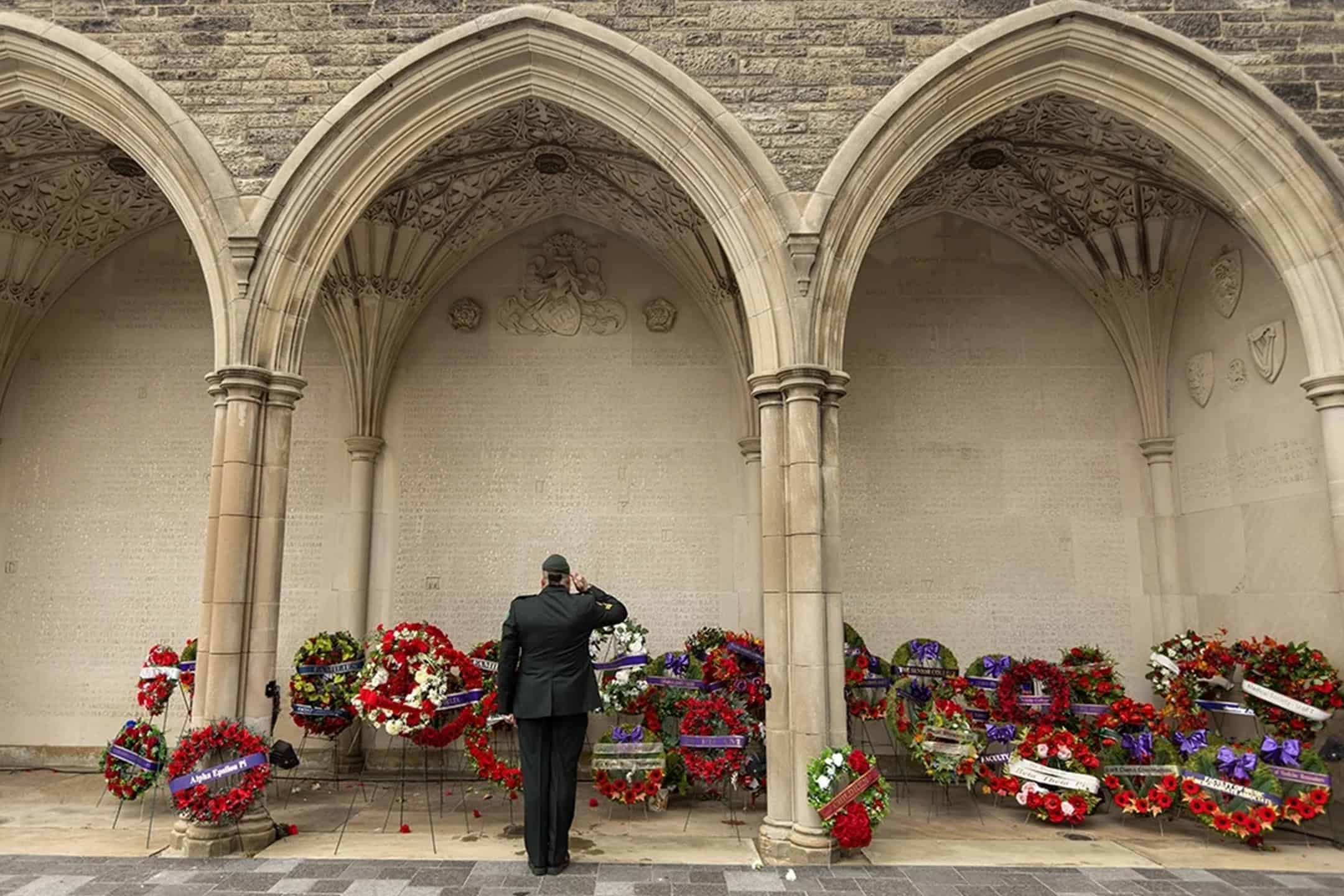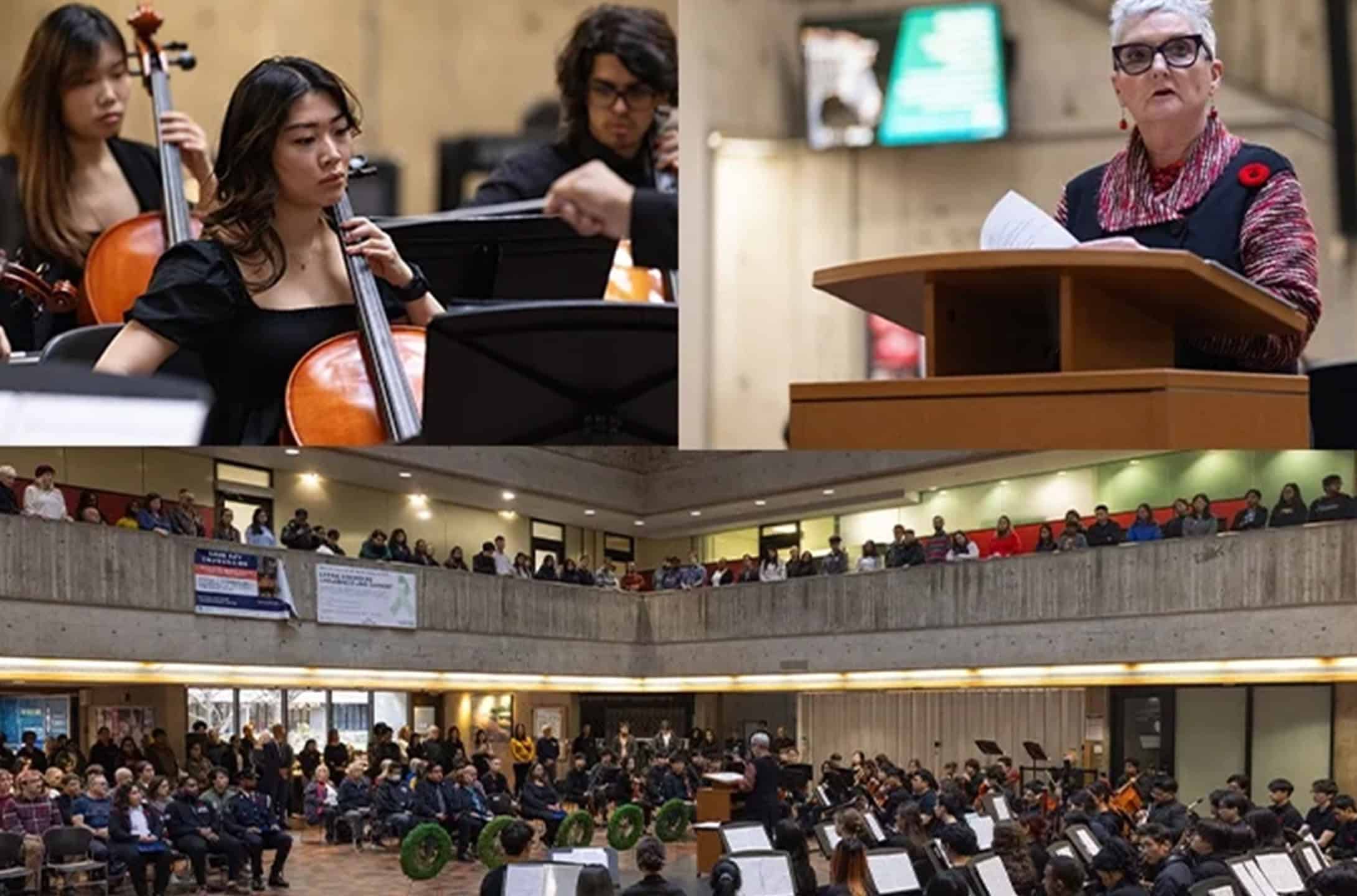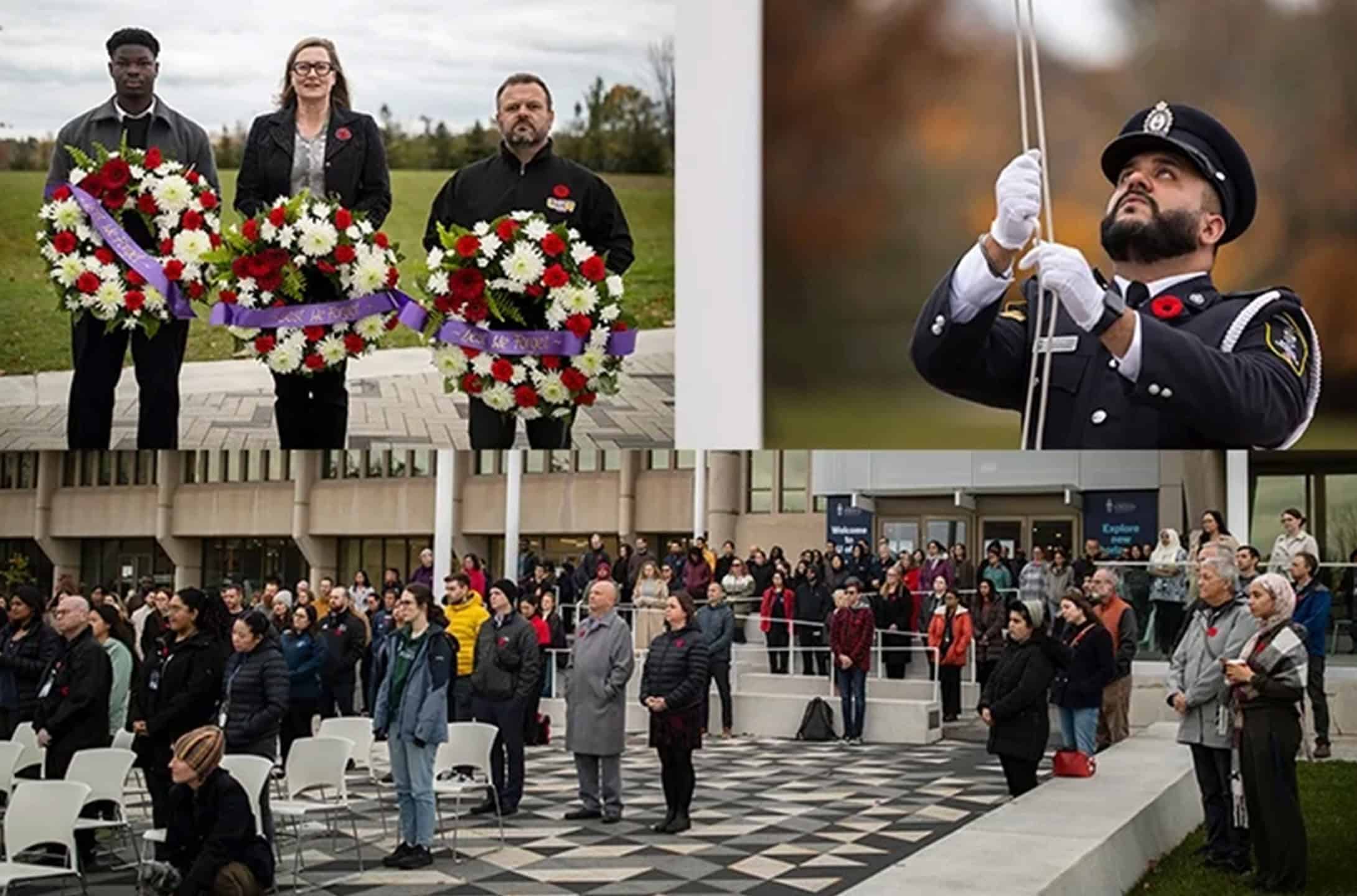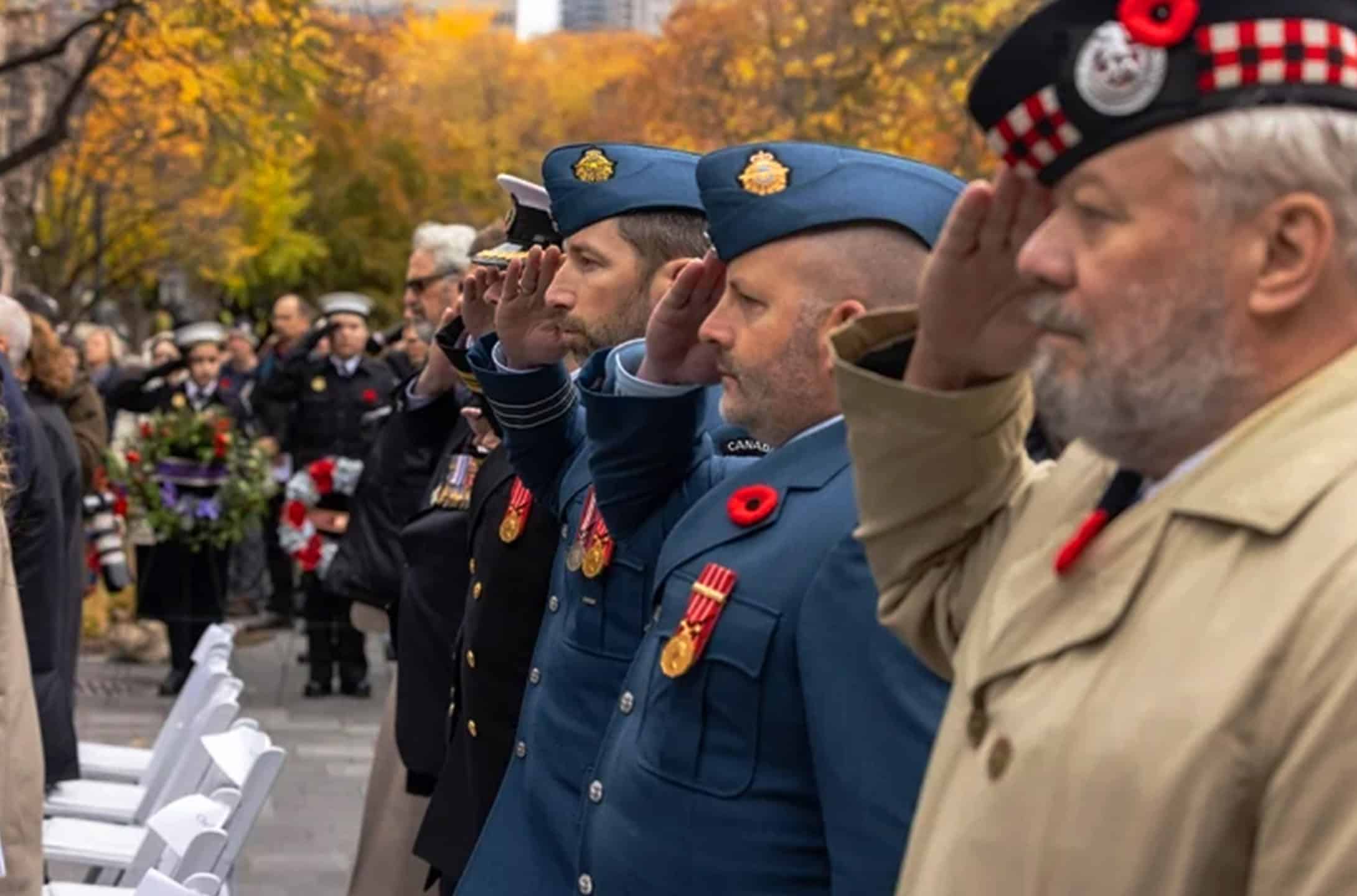On November 11, U of T held Remembrance Day services across its three campuses. At UTSG, the service commemorated the 100th anniversary of the Soldiers’ Tower.
The Varsity attended each event and spoke with some attendees about the ceremony.
UTSG
The UTSG community observed Remembrance Day with a ceremony at the Soldiers’ Tower to honour the sacrifices of veterans and those who died in service of Canada in World War I and World War II. Students, faculty, staff, alumni, government officials, and local residents gathered to pay tribute to those who served in military conflicts past and present.
Around 10:30 am, the carillon bells rang out from Soldiers’ Tower. The ceremony marked two historic milestones: the centennials of both the Soldiers’ Tower and the Royal Canadian Air Force (RCAF). Chair of the Soldiers’ Tower Committee Lieutenant-Colonel (Lt.-Col.) Peter MacLaurin and Lt.-Col. David Letellier de St-Just delivered speeches to the hundreds in attendance that reflected upon the enduring legacy of those who served.
The ceremony featured a tribute to Canada’s war efforts through poetry readings, historical vignettes, and a recounting of Soldiers’ Tower dedication to fallen soldiers on June 5, 1924. The Soldiers’ Tower is a memorial to the 628 members of the university who gave their lives while on active service in World War I.

Wreaths were laid at the tower’s three arches by U of T President Meric Gertler, Vice-President and Provost Trevor Young, Governing Council Chair Anna Kennedy, and Canada’s Deputy Prime Minister and Minister of Finance Chrystia Freeland. Other dignitaries and representatives from student groups also participated in honouring the fallen.
At 11:10 am, a gun salute at Queen’s Park resonated across campus followed by a solemn moment of silence and the singing of the Canadian national anthem. The ceremony concluded with a public reception at Hart House’s Great Hall, where attendees reflected on the day’s events.
Attendees were also invited to explore the Tower’s Memorial Room, which remained open until 4:00 pm. The room is open to the public multiple times a week on an irregular schedule.
UTSC
To pay tribute to the Canadian soldiers who served during World War I and World War II, UTSC also held a ceremony in the Meeting Place.
Linda Johnston, vice-president (VP) and principal of UTSC, made a speech at the event. “Our need for peace, empathy, understanding, taking care of each other, finding common ground and imagining the pain of others remains more important than ever before,” she said.
Michael Barth, a professional trumpet player and U of T graduate with a Doctor of Musical Arts degree, played “The Last Post” on the bugle during the ceremony.
The UTSC concert band, string orchestra, and concert choir performed pieces to honour Canadian soldiers as well.

Jules Pastoor is a second-year UTSC student studying French, music, and psychology. For the ceremony, he played the trumpet with the UTSC concert band and spoke in an interview with The Varsity about the significance of Remembrance Day.
“I think it’s really about honouring and respecting all the trials that the soldiers went through and just people who had to go through war itself,” he explained. “It’s a time to reflect and remember what they’ve done for us and what their lives and impact mean to all of us.”
Pastoor said that Canadian soldiers’ sacrifices helped lead the country to where it is now, saying, “We look back and see many of the actions soldiers had to do to keep the peace in our country and make it the way it is today.”
Ivan Cheung, a fourth-year UTSC student in music and French, who plays clarinet in the UTSC concert band, said that in the modern day, it is more challenging to take the time to reflect on past events and think about their effects today.
“It’s pretty difficult to have time to reflect on these things, just to have a day to remember that this is important,” he said in an interview with The Varsity.
Cheung noted that it can be easy for Canadian university students to overlook the immeasurable acts of service that Canadian soldiers and their support networks performed to increase national safety and freedom for generations to come.
“As a U of T student, I have certain freedoms that a lot of us take for granted because it’s just innate,” he said. “You feel it is part of Canadian culture, but there was a lot of bloodshed and sacrifice that went into something like this.”
UTM
UTM’s service began at 10:45 am, with UTM VP and Principal Alexandra Gillespie starting with a land acknowledgement. The Canadian national anthem was then played.
In her opening remarks, Gillespie reflected on what Remembrance Day means to her. “Athenians remember the sacrifice and loss of war. They held generations of soldiers, veterans and families in their memories and they did it together,” she said. “That’s part of what Remembrance Day means for me.”

“We remember veterans of Canadian wars and acknowledge the gravity of their service together,” she added. “At UTM, we do it in a community that connects students, faculty, librarians, staff and alumni from 130 countries around the world.”
“From Ukraine and Palestine, Sudan and Israel, Iran and Myanmar [to] many others, [war] is both a memory and a real experience of life today. [With] our responsibility to honour the past… also [comes] a need for care in the present,” Gillespie noted.
After her speech, Richard Waters, a member of the United Steelworkers Local 1998 — a union that represents U of T’s various administrative and technical staff — and VP Equity at the University of Toronto Mississauga Students’ Union Philip Anyang placed ceremonial wreaths at the foot of the flagpole near the William G. Davis Building.
At 11:00 am, attendees observed two minutes of silence.
With files from Zoya Siddiqui.



No comments to display.